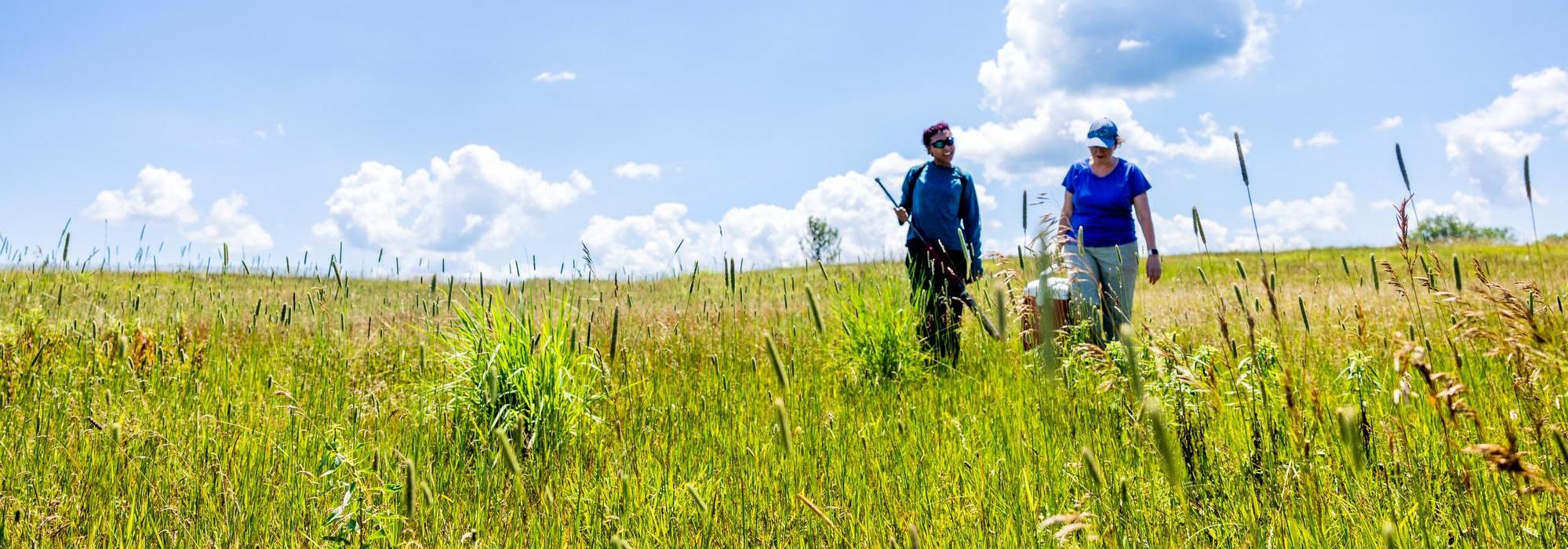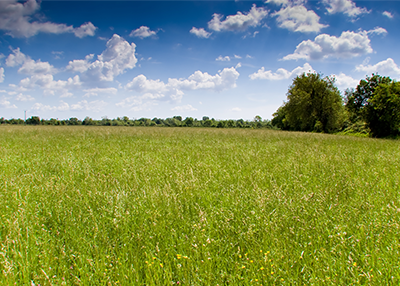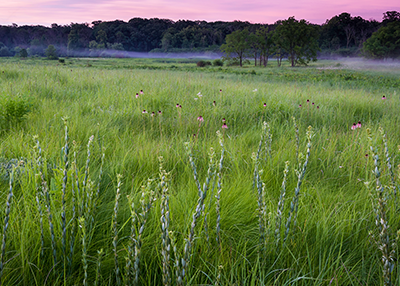
Prairies
Illinois earned its nickname, the “Prairie State” from the sweeping grasslands that once covered most of our state. Before widespread agriculture and urban expansion, prairie ecosystems shaped the culture, ecology and identity of our region. Today, only a tiny fraction—just 0.1%—of those original prairies remain.
NIU is committed to reconnecting with reconnecting with this important piece of Illinois’ heritage as part of our broader commitment to environmental sustainability. By restoring native prairie landscapes on our campus, we support biodiversity, strengthen local ecosystems, honor those who once and continue to steward the land and advance a more sustainable future for our campus and surrounding communities.
Prairies support 1000% more biodiversity than turfgrass areas.
Prairies have deep root systems, acting as a sponge to help mitigate flooding.
Much of DeKalb County, including where NIU is located, was once prairie.
Prairies and NIU
NIU sits on land that was historically prairie, much like the rest of DeKalb County and 60% of the state of Illinois. These native habitats support local ecology, promote mental and physical well-being, provide access to green spaces, offer unique educational opportunities and help build climate resilience.
The university engages with prairie habitats through conservation, teaching and research- maintaining a 1.7-acre prairie along the Kishwaukee River, supporting prairie research plots on the west side of campus, and collaborating with Nachusa Grasslands on research and conservation efforts. Many students take courses in ecological restoration, preparing them for careers in this growing field.
Why Prairies Matter
Ecological Benefits
Prairies are homes and habitats to thousands of pollinators, small mammals, birds, reptiles, amphibians, and more. Their unique plant species serve as reproductive host plants, food and homes, often being the only source for the survival of a species. Having these thriving, biodiverse ecosystems make for thriving communities that we want to live in.
Mental and Physical Health Benefits
Spending time in a prairie, especially one with recreational trails, offers a meaningful break from the stresses of everyday life. Research shows that spending time in nature improves physical health, reduces stress, lowers the risk of anxiety and depression and strengthens social connections.
Access to Green Space
Accessible green spaces open the door to life-long engagement with nature. Local prairies provide nearby spaces to learn, grow and play amongst a natural landscape. For urban communities in particular, these pockets of native habitat offer great ways to encounter biodiversity and enjoy the outdoors.
Educational Opportunities
Prairies are an excellent way to use our natural environments as outdoor classrooms and living-learning laboratories. K-12 students can benefit from experiential field trips and paired classroom lessons. College students can gain hands-on experience in research and workforce development skills to bring with them into their careers. The public can attend workshops, participate in stewardship efforts and attend community events, all within a prairie.
Climate Resilience
Prairies play a powerful role in improving air and water quality, reducing flooding and storing carbon in the soil. Native prairies support NIU and DeKalb’s climate resilience goals and are essential to building more sustainable communities long term.
What to Expect
Prairie restoration is a long-term, hands on process that takes years to complete and requires ongoing maintenance. Each phase has a distinct look and feature, culminating in diverse landscapes with benefits for our planet, our communities and each of us as individuals.

-
1
Year 1: Sleep
 It may seem that the plants are "sleeping," but in fact they are investing in root growth.
It may seem that the plants are "sleeping," but in fact they are investing in root growth.Weeds may thrive - when weeds are knee-high, mow the planting to 6 inches several times over the growing season. This way more sunlight can reach seedlings.
-
2
Year 2: Creep
 The native plants are taller, although some may still be in the seedling stage. A few natives may bloom.
The native plants are taller, although some may still be in the seedling stage. A few natives may bloom.Still some weeds. Mow as high as possible in June or July.
-
3
Year 3: Leap
 Most all native plants should be well established, with a number of species blooming.
Most all native plants should be well established, with a number of species blooming.Scout and spot treat invasives. Burn a portion annually, if possible.